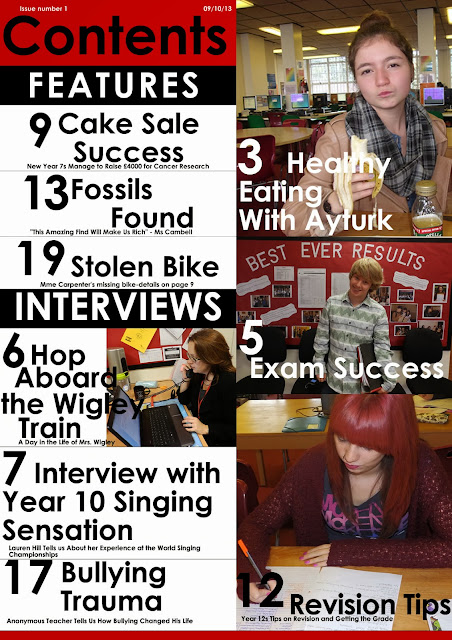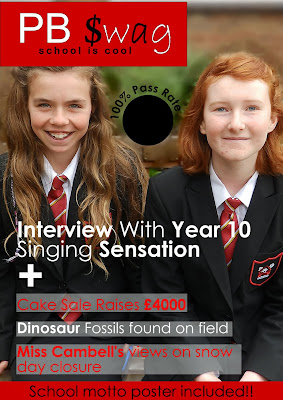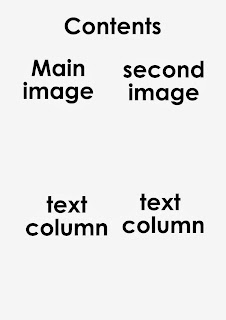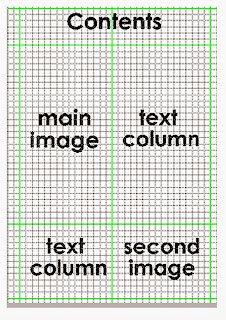I have learnt about camera angles/shots and the different types; extreme long shot - the person or people of significance can be seen as well as the background, long shot - head to toe shot of person or people, mid shot - person or people from waist upwards, medium close up - person or people from shoulder to face, close up - just the face and extreme close up - eyes or any other feature on the face.
I have also learned all the key conventions of a front cover and contents page.
I also learnt how to use various tools on fireworks. Like the blurring tool which I used for my main image on the front cover. I have learnt how to make mastheads and pugs on fireworks.
I learnt about denotation which is the literal meaning of a word. Connotation is an idea or meaning suggested by or associated with a word or imagery.
I learnt about primary and secondary audiences.
Media texts are specific media products, such as the sun newspaper and media form is all media products such as tv programmes, films, CDs, books, newspapers, web pages etc.
I have also learned all the key conventions of a front cover and contents page.
- masthead
- headlines
- coverlines
- features
- articles
- pull quotes
- lure
- puff
- serif style font
- sans serif style font
- pug/starbursts
- layout
- house style
- visual syntax
- straplines
- hook
- banner
- photo
- masking
- use of colour
- page numbers
- issue number and date
- information/blurb
- categories
- font size variation
I also learnt how to use various tools on fireworks. Like the blurring tool which I used for my main image on the front cover. I have learnt how to make mastheads and pugs on fireworks.
I learnt about denotation which is the literal meaning of a word. Connotation is an idea or meaning suggested by or associated with a word or imagery.
I learnt about primary and secondary audiences.
Media texts are specific media products, such as the sun newspaper and media form is all media products such as tv programmes, films, CDs, books, newspapers, web pages etc.





